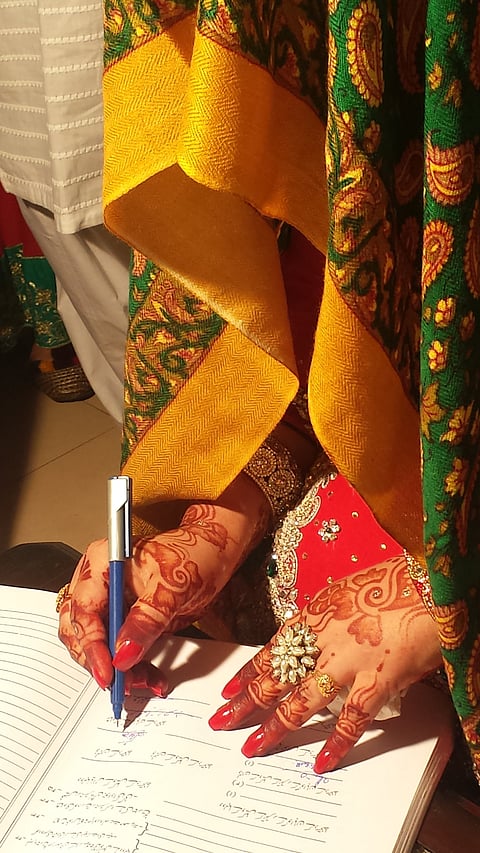(This article is a part of the web-exclusive series from our latest issue 'The Marriage Issue'. More from the print quarterly here.)
On a bitingly cold night in November 2013, I found myself waiting at a police station. Samina and one of her husband's aunts, Mrs Ali, were with me. I had first met Samina ten years ago in a village in Mirpur district, Pakistan's out-migration hub for the UK. Back then she was caring for an infant son and waiting for her visa to materialise. Her British-Pakistani husband, Shoaib, had not succeeded in holding down a full-time job for six months, which was the requirement in 2004 for sponsoring a spouse visa. It took another three years before Shoaib was able to collect enough payslips to apply for Samina's visa. Further delays followed while the British High Commission ran DNA tests to ascertain whether Shoaib was the biological father of Samina's son.
In 2007, Samina finally arrived in the UK with her son, then nearly four years old, and went straight to Shoaib's parents' house. Three more children followed quickly, but the marriage was not a happy one since she faced abuse from her mother-in-law. She attempted to leave home twice. But without any relatives of her own in the UK, and unable to muster support from Shoaib's family, these attempts were ultimately futile. On her first attempt, she took the children to one of Shoaib's cousins, but returned after two days because the cousin could not accommodate her for long. The next time she took an overdose of paracetamol tablets and ended up in hospital.

